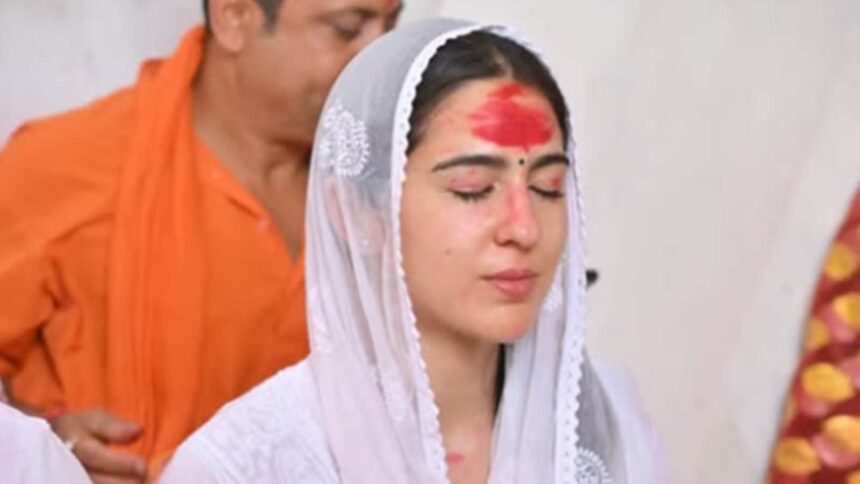Sara Ali Khan is currently on a . After recently visiting the Chandramouleshwara Temple in Karnataka, she travelled to Guwahati to seek blessings at the Kamakhya Temple — one of the most revered and powerful Shakti Peethas in the country. Known for its deep association with Tantra and the feminine divine, the temple is often visited by devotees seeking spiritual insight, healing, and transformation.
Sharing glimpses of her visit on social media, Sara posted photos in a white chikankari salwar kurta, pausing to take in the serenity of the temple. She captioned her post with a poem: “Moments of stillness amidst the perpetual flow. A purposeful reminder to breathe and go slow. Listen to the whispers of the river, feel the suns glow. Wander deep, embrace life and allow yourself to grow.”
Many associate Kamakhya with devotion, but not much is known about the temple’s tantric significance, its cultural heritage, and its role in spiritual practices that go beyond mainstream rituals.
Saru Subba, historian and founder Carol School , tells , “The Kamakhya Temple has an ancient and layered history, dating back to at least the early centuries of the Common Era, though its origins are believed to be even older. It has been destroyed and rebuilt multiple times — most notably in the 16th century under the Koch king Naranarayana, which gives the current structure its blend of ancient and medieval architecture.”
It is considered one of the most important Shakti Peethas, he adds, where the yoni of Goddess Sati is said to have fallen, marking it as a sacred site for in her most elemental form. “Its significance goes beyond the spiritual; it was also a center of Tantric learning and practice, attracting mystics and scholars from across the subcontinent,” notes Subba.
Even today, he states that Kamakhya retains a unique position in Indian sacred geography — respected “both as a pilgrimage site and as a place that preserves spiritual traditions that are often overlooked or misunderstood. Its rituals, festivals like Ambubachi Mela, and deep symbolism continue to inspire reverence and curiosity alike.”
The Kamakhya Temple stands out among Shakti temples for its deep-rooted connection to the Tantric tradition. Subba explains, “While many Shakti temples focus on divine femininity in nurturing or warrior forms, Kamakhya embraces the raw, unfiltered aspects of the feminine — creation, power, fertility, and transformation. What makes it truly unique is that the temple does not house an idol in the conventional sense. Instead, the yoni or womb-shaped stone, constantly bathed in natural spring water, is venerated.”
He continues, “This symbolism speaks directly to Tantric philosophy, which celebrates the union of the physical and the spiritual, the seen and the unseen. Tantra at Kamakhya is not about rituals misunderstood as occultism, but rather about transcending duality, embracing wholeness, and recognising the sacred in all aspects of life, including those often considered taboo.”
Temples like Kamakhya often exist on the thresholds — between the material and the spiritual, the known and the mystical. “For seekers, this sacred ambiguity becomes a space for inward reflection. Kamakhya, perched atop the Nilachal hills and steeped in silence, naturally evokes a sense of stillness. Visitors often speak of an atmosphere that encourages quietude rather than display, where the inner journey feels just as important as the outer one,” highlights Subba.
The temple’s embrace of Tantra, with its emphasis on acceptance and inner exploration, supports a path of surrender — not as defeat but as trust in the unknown. Subba mentions, “Self-reflection is intrinsic here; the symbolism, the rituals, and even the temple architecture are designed to turn one’s gaze inward.”








